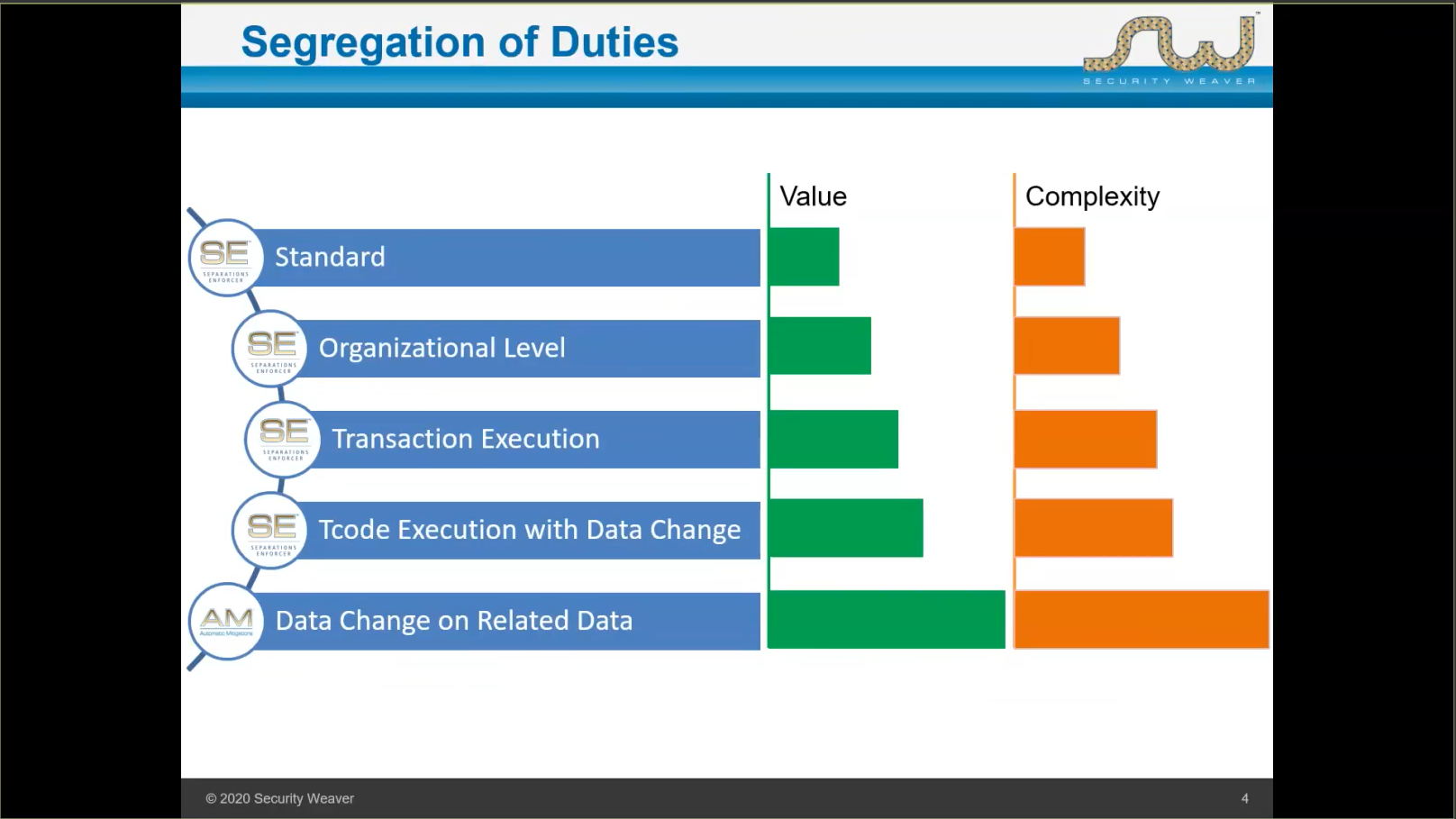Webinar April 29th : 4 Ways to Handle SAP Security Authorization Errors

Are you spending too much time maintaining SoD rules?
Accurately detecting segregation of duties (SoD) conflicts can be a challenge -- especially if you are looking for conflicts across multiple systems or if your organizational structure is always changing. Too often organizations address the challenge of accurate SoD reporting by spending a lot of time constantly updating complex rules in their SoD rules matrix. Some organizations lack the IT staff to constantly update SoD rules or they lack the GRC tools that can take into account different ERP configurations -- both of these constraints result in inaccurate user access risk reports, tedious paper trails, and unnecessary discussions with auditors.
What would it be like if you could get accurate reports without complex rules that must constantly be updated?
The answer lies in having a dynamic ruleset that automatically adjusts to configuration differences across your application landscape and that adjusts to organizational changes in real-time.

Dries Horions
Product Manager
Security Weaver
Join Dries Horions, as he discusses ways to dynamically expand your SoD ruleset in order to accurately identify risks without having to constantly update your rules. In this webinar, Dries will discuss how SoD reports come to have inaccuracies, along with solutions that can help you save time and money, and, perhaps, of even greater personal importance, solutions that can help you escape being annoyed by false positives in your user access risk reports.
Click here for details on how to attend the webinar event, and to view the recording following the live session.

Apr08, 2020 - Quantifying risk and automating mitigations by Dries Horions
Understand the key drivers to quantify and automate risk mitigations to lower audit cost, leverage user productivity, improve compliance, reduce the cost of IT controls, and lower the risk of fraud.
Watch Full Video